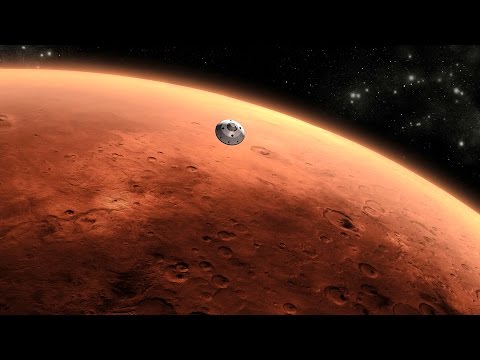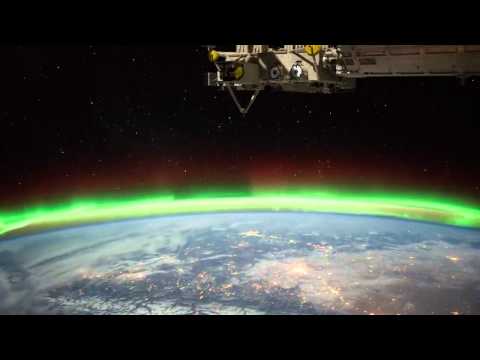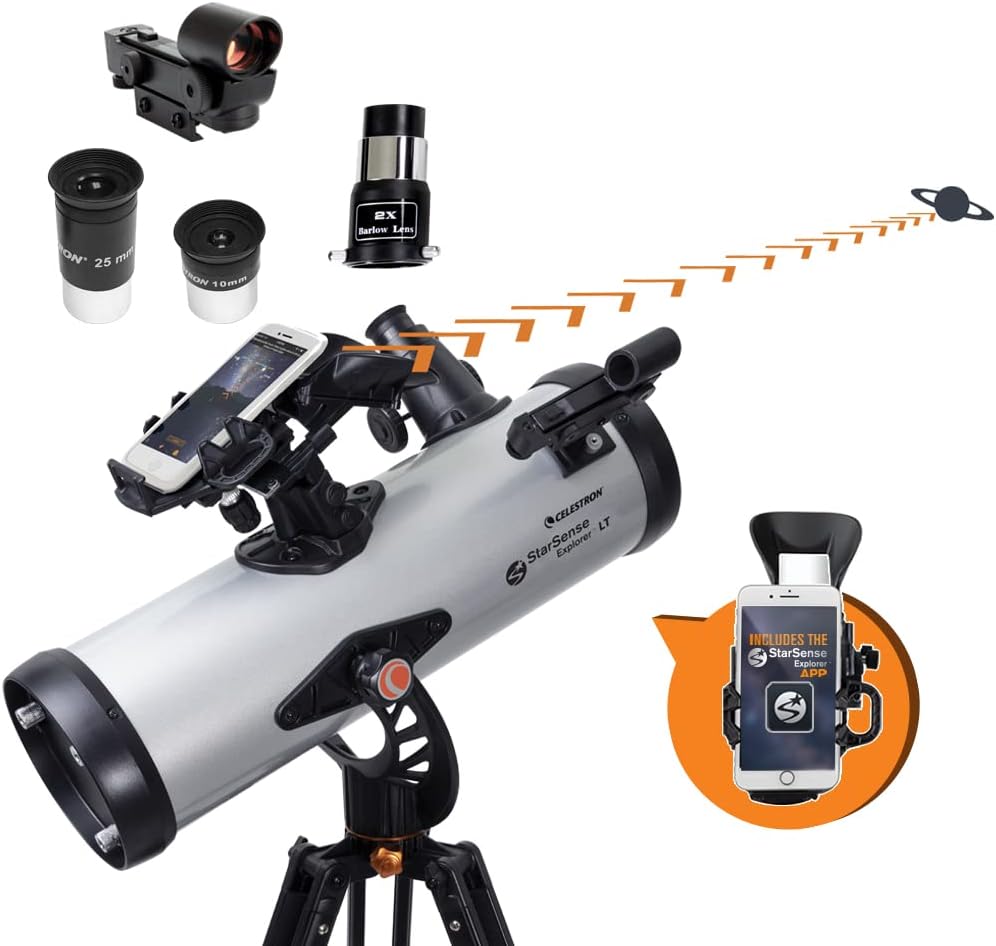Can we REALLY build on Mars? [SPACE ARCHITECTURE]
Mars. I always wonder what it would be like to live there And to build there. What would it feel like to look out the window and see an alien landscape millions and millions of miles away from everything we know. Although the exact timeline is unclear. We’re definitely planning for a new life on Mars and we’re putting a lot of money into it. NASA has plans to send their first human missions sometime in 2030, SpaceX by 2029, and also establish a city of 1 million by 2050. The Emirates plans to build a human settlement by the year 2117, although there are still a lot of variables and unknowns in the last couple of years, we found potential water , they found Organic molecules hinting to signs of life and technology is accelerating at an insane rate. This video sponsored and brainstormed with Milanote More on them later in this video. The Kardashev scale is a method of assessing the technological capabilities of a civilization based on the amount of energy it can use and manipulate. A Type one civilization has full control over all of our energy sources. We’re currently at type 0.72, but we are on track to reaching type one. And once we get there, according to Kardashev, we’re going to have such a profound understanding of science and technology. We’re going to be able to manipulate matter and energy on a molecular level. We’re going to have control over the water patterns, and we’re even going to be able to colonize other planets. So maybe it’s just a matter of time that humans start to expand beyond our planet. But what kind of conditions do we need to build for humans to really live there and not just survive? And is our species even ready for this? Right now, the focus for the next couple of decades is getting the first few astronauts to live there for an extended period of time. But I think once that mission is successful, it’s really a matter of time until we get the first pioneers who are the selected test group who’s going to continue to do research on Mars, and the first settlers, the first Mars community to permanently live there. And one day we will have a human colony on Mars. They’ll probably think and maybe even look very different from us. Each of these categories of people are going to have a very different experience of Mars depending on the technical apparatus of that time. And we’re still quite a ways away from being able to modify the Martian atmosphere and be able to experience Mars as we currently live on Earth. Right now, we’re in this very first stage. But this is a really critical point because once we get past this mark, where we’re not just surviving but thriving on Mars, it’s going to open the doors to a whole new frontier and becoming a multi-planet species where we could feel confident about creating new habitats wherever we go. There have been lots of different proposals for habitation on Mars, but it seems like we are leaning towards a construction method that’s a combination of prefabrication and 3D printing using the local material on Mars. So in 2019, NASA held a competition to design a 3D printed habitat on Mars to house four astronauts for the time span of a year. They were given a set of functional requirements like a lab, a kitchen, a rec room, and 1000 square feet of living space, all designed for the astronauts to conduct research while living there. If these habitats prove to be successful, these modules should be easily replicable for further expansion. Each of these proposals use a phased strategy where they send autonomous machines to first harvest the raw Martian materials, and then they create a building material using the Martian soil and other composites. And then they 3D print the initial framework for the habitat before the astronauts actually get there. Once this is built, the outfit, the interior, either through an inflatable structure or any other prefabricated components that come together on the inside of the shell. To make this video, we looked at hundreds of articles and videos, and we use Milanote to organize all of our research into something a little bit more coherent. Milanote is extremely intuitive with lots of templates that you can choose from. And for us, having a visual mind map like this always helps us make connections that we didn’t see before. You can very easily drag and drop images, and my favorite part is how it converts links into thumbnails. So you don’t ever need to download things. All of this is on the cloud so you can share it with other people and it’s completely free with no time limits. So you can sign up using the link in the description. I’m actually really curious how you guys use it, so if you’ve tried it, let me know in the comments. You can’t do this on Mars. Keep your legs straight. This is misison control Houston 3 hours and 26 minutes into the space walk byt Cassada and Rubio An astronaut has to deal with a huge amount of problems on Mars, like radiation, massive temperature changes, exposure to dust and other contaminants, changes in the nervous system. There’s lower gravity, which can cause what they call a puffy face chicken legs syndrome. Yes, that’s what the that’s what it’s actually called chicken leg syndrome. And of course, you’re really far away from anything and everything, including food, materials, hospitals and equipment. Even if everything goes perfectly with the engineering and the astronauts are perfectly trained physically, the mission could still fail due to the human factor isolation, being far away from home, living in a confined, high stress environment, it could lead to depression and behavioral changes. I mean, we really saw this during COVID, right? There are several places on Earth that share similarities with the red planet. In fact, some of them are used as training grounds for astronauts. But these aren’t necessarily the best representation of how people are actually going to live there, because Mars doesn’t really have a living surface with zero air pressure. Mars is essentially a vacuum. You just can’t survive without a suit. You would black out in like 20 seconds, and if you tried breathing, your lungs would rupture and you would die within minutes. In fact, even the harshest environment on Earth is still going to feel like heaven compared to Mars. But I think there’s a few manmade environments that do have some similarities to living on Mars. The structure of a lighthouse is a series of interconnected components with a specific function controlled by the inhabitants. Your everyday life and duties are entangled with the structure as long as you live there. In some ways, you become a part of the lighthouse, but you can still go out and take fresh air and experience the environment outside the lighthouse. What happens if you take the concept of a lighthouse to the extreme. just like on a mars habitat People in a submarine work together towards completing a mission that could last months. Each person has a very specific job and they have to work together to succeed. And they do this while crammed inside a pressurized steel hull with very little personal space. So the level of pressure get it? is both physical and psychological. In each of these self-contained conditions, there’s a real profound connection between the inhabitants and the places they live because it can determine whether you live or die. The most important part of the Martian habitat is the shell that protects from radiation and the hostile climate. So a lot of these designs free a cave like condition. There are some examples of troglodyte settlements like the Matamata underground houses and Tunisia, Africa, which uses the Earth’s mass to protect themselves from the heat and the windstorms. But even in the settlements, you still have access to the outdoors. This is also going to be the very first time that humans are going to be living in complete disconnect from the physical environment. So the way that they shell mediates the connection to the outside environment is really important, not just for physical safety but also for a psychological connection to the Martian environment. The project KAHN-YATES it’s designed with multiple glazed opening and the is organized over three stories so you can get a wide array of different views into the outside environment. You also have these more dome shaped designs, which are a little bit more common, which has one or two fixed views. The Shell also affects the functional organization and movement within the habitat. You’ll see lots of different forms in the design, but you can kind of divide them into two distinct categories a vertical layout and a horizontal layout Within the horizontal Layout there’s designs that separated all of the functions into their distinct pods, and there’s ones that’s consolidated all of the functions into one single pod. If you’re looking at courtyard typologies as a way to create social interaction, maybe an organization like this makes a little bit more sense. These are probably the most efficient structures in terms of applicability because you can create more and you can connect more pods. But if it were me, my mental health would deteriorate real fast in these types of arrangements. One, because they’re highly, highly monotonous and you can see the same spaces. and same walls from all different views. Two There’s very little separation between functions. According to Edward T Hall, we all have a spatial dimension that determines our relationship to each other and to our surroundings. When these dimensions are disrupted, either by other people or by poor design. You can have really serious psychological impacts. And he calls this idea proxemics In his book, The Hidden Dimension. He talks about a crowding experiment in Norway, where they took a group of 48 rats and put them in an indoor environment. They were given everything they needed except for personal space. There was a quick population boom, followed by such a severe psychological and behavioral disruption that it eventually led to their extinction. He called these behavioral sinks. It distorted their behavior, everything from sex nest building, birth territoriality, and a lot of the rats had tumors and enlarged kidneys and enlarged livers, all of which are signs of extreme stress. The crowding led to a pathological behavior in the rats. And although humans have, for the most part, developed the level of cognitive sophistication that makes us think before we act. The limbic system, which is a part of the brain that controls our emotional processing and motivation, is still one of the oldest parts of the brain, and it has a direct connection to the brainstem. So our reactions and behaviors are still very influenced by our instincts. And just like animals, we still have an instinctive spatial dimension that influences how we interact in different environments. Even if we have physical separations or the most advanced virtual reality technology. We still need to think about these invisible dimensions as extensions of our bodies, and not just that these invisible dimensions are also based on things like cultural background and the nature of the relationship between the people. There’s an example in the book Japanese walls versus German walls. In Japanese culture for a really long time. They’ve used paper walls and paper doors, so Japanese people can selectively filter out auditory information and they speak more softly while German people they need really thick, soundproof walls, otherwise they’d feel intruded on in loud atmospheres. If we want to create an enclosed environment where we try to avoid conflict as much as possible, we really need to consider these invisible dimensions and not just the performance. These two proposals divide the functions vertically, and these ones divide the functions into individual pods. The horizontal layout definitely provides more separation. In X House, the sleeping area is the same pod as the lab, which connects the lab and the gym in the other pod. And there’s another pod for the kitchen. And the two vertical proposals have all the functions separated into different but interconnected floors. Comparing the two layouts, my preference would definitely be the vertical one. And my reason is because even in the most technical environments, in fact, especially in the most technical and rigorous environments, I think you need a sense of variability and surprise, something that’s not planned. These people are going to be living in the same environments, doing the same thing with the same people, eating the same friggin food every single day for a year. Everything is scheduled, everything is planned, and there is absolutely no surprise. This type of arrangement means that if I want to go to the kitchen, I go to the kitchen. If I want to go to the lab, I’ll go this way and I’ll go to the lab. It’s really efficient and it’s really purposeful. But I think in such a high stress environment, you need a little bit of space to roam without purpose, even if it’s like 1% of the time. With this vertical layout, if you want to get to the lab, you have to get past the garden and the kitchen. And in those moments you might run into another crew or you might find some other activity. That’s going on. And the result is you don’t just get a variety in interactions, but also a variety in experiences as well. You get a sense of scale and hierarchy and a sense of surprise. Instead of having everything visible in your face. Environments like this creates a sense of curiosity and it creates atmosphere. The Kahn Yates project also has a vertical organization, but in this case it incorporates a garden at the ground level that each of the floors can look down onto. One of the competitions program requirements was a garden, and a lot of these other projects provided a highly efficient hydroponics garden. But again, I really like how this design creates an informal, unplanned space, while also dual functioning as a garden. There’s concern messaging around these explorations. We need to design for people to thrive, not just survive. And of course, the safety and efficiency of these habitats are very, very important. They’re going to form the basis for our attitude towards inhabiting foreign landscapes. So I think it’s some of these intangible qualities, even though they’re hard to quantify, they can really make the difference between a research mission and a new and exciting vision for the future.













